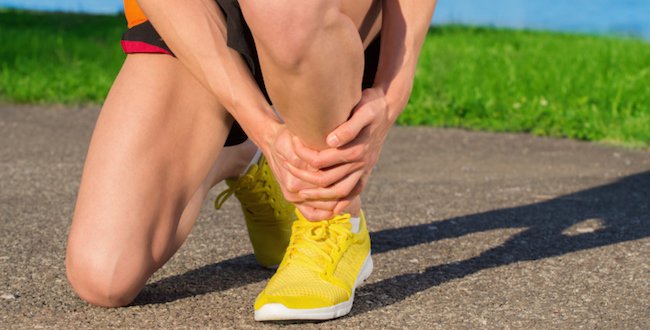Shin Splints and Physiotherapy

In our last blog entry , we discussed elements of a well-rounded running program. We also discussed why preventing injuries is critical to achieving your running goals and how physiotherapy can help.
In this blog entry we’d like to discuss injuries that tend to appear in runners. While there are a number of really common ones, we’re going to focus on “shin splints”. We’ve treated a few patients lately who have developed this condition while running. Shin splits are a common running injury, but have an excellent prognosis and are relatively straight forward to treat (if treated early).
What exactly are shin splints?
Most people first learn about shin splints when they develop pain (sometimes excruciating) on the front or inner-side of their lower leg. Shin splints can affect one, or both, legs. It tends to get worse with running (or any loading activity), and feels better with rest. Often, the pain associated with shin splits makes running, and other loading activities, unbearable.
Shin splints are essentially an overuse injury of the muscles that attach onto your shin. If you feel pain on the front of your shin, it’s likely the tibialis anterior muscle. If the pain is on the inner-side of your leg it’s commonly the tibialis posterior muscle. These muscles may become inflamed, tender, and sore to the touch – this signifies that the muscle has been damaged (strained) and needs to recover. Patients sometimes ask if shin splints mean the shin bone (tibia) is fractured – it does not. However, in exceedingly rare cases untreated shin splints can develop into tibial stress fractures. Therefore, it is important to seek advice early in order to obtain a proper diagnosis and begin treatment.
What causes shin splints?
While many things can contribute to shin splints, we’ll focus on the big ones in running: overuse, and improper running biomechanics (poor running form). Generally speaking, overuse refers to those increasing their training load too quickly. There’s a reason why Sun Run training clinics are spread over three months – gradually increasing training load helps prevent these types of injuries. Improper running mechanics are often due to tight or weak muscles in the glutes, core, legs, etc. While these two causes are most evident in newer runners, they can appear from time to time in even the most trained runners.
How can I fix my shin splints?
Fortunately, treatment for shin splits is relatively straight forward and prognosis is excellent. Your physiotherapist will assess the severity of the injury and then focus on reducing pain and inflammation. The therapist will also help determine the cause of the shin splints (for example, improper biomechanics, overuse, or other) so an appropriate treatment plan can be developed. Typical treatment includes muscle strengthening, stretching, heat/ice and biomechanical corrections. A majority of patients are well on the road to recovery after 4-6 weeks or so.
If it sounds like you are suffering from shin splints, come see one of our physiotherapists for an appointment and we can get you on the road to recovery.
Back to Blog


